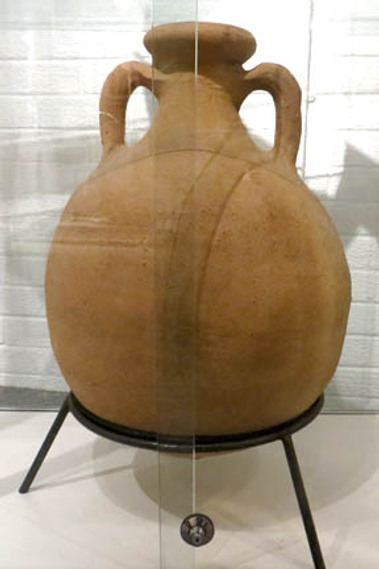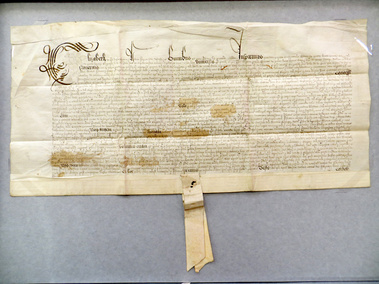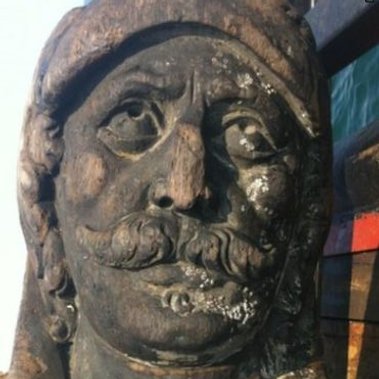CARGO Heritage Timeline
The story of Poole Harbour’s development begins about 125,000 years ago as a valley.
A river known as the Solent flowed into this valley merging with the rivers Frome and Piddle as it’s sources.
4000 - 3000BC Axe heads from Cornwall. The present sea-level Harbour is established.
2500-1700BC
Beakers from Portugal
Pottery made at Bestwall Pottery
800-600BC
Bestwall Quarry Pottery
Axes (never used)
Amorican ware from Normandy, France
Metalwork-Rings and Beads
600-700BC
Glass Finger Ring from Poland (Worth Matravers)
373 Bronze Axes intact- Putlake, (Langton Matravers)
398-176BC approx
Huge production of Wheat-ferried across the Bay
Green Island Causeway-Proto Port 65m x 8m
See Victor Ambrus reconstruction
See Channel 4’s Time Team Programme Published on Apr 7, 2013
295 BC approx
Log boat - single tree, too long for ocean voyaging, used to carry cargo around the Bay with a wide turning circle
Celts and Romans - Amphoras of wine, salt, shale bracelets,
Iron Age - Bulbary Anchor North Harbour
100-50BC
Hengistbury Head
Cargo coming in to Poole-Amphora and Pottery from Amorica (North Normandy)
Metal Work.
Cargo going out from Poole-Dogs, Slaves, Possibly Grain
Huge increase in production of Pottery from Bestwell Quarry and Worgret. Wareham-Frome River. Wareham Cemetery found: Shale Pottery, Amphora, Coins, Figurine. Roman Army issue Black Burnished ‘Robust’: Cooking Pot, Dog Dishes, Bowls. Cremation Pots
1 million black burnished pots a year being produced
43 - 65 AD
Roman occupation.
Cargo going out of Poole-Shale Rough Outs,Bracelet, Coins for Romans. Cargo coming in to Poole-Coins. Cargo going out of Poole-Pottery,Clay,Shale,Salt. Cargo coming in to Poole-Exotic and Everyday
Glass from Germany. Snake Thread Glass from Cologne in Germany
Samian Pottery-Tableware and Course Ware. Moselkeramic Black Slipped Ware
End of Iron age - take over of port by Romans - Romans importance of sea borne trade. Limestone for building. Oysters. Purbeck Marble/Stone
65 - 410 AD Continuing Roman Occupation
900AD
Vikings travelled long distances using boats that had long open-decks. powered by men using oars and one sail. The boats were called Knarrs, with hulls that had sides with overlapping planks called Strakes.
Knarrs average 54 feet long
Beam length: 15 feet
Cargo: 30 to 40 tons maximum.
Crew: 90 men maximum.
Maneuverability: Good with large waves, light enough to be portable and carried across land from one port to another.
Caged Ravens were used on voyages to help them land, (a bit like the Old Testament story Noah who sent out a Dove to see if the Great Flood had receded. If the Ravens did not return to the Norsemen,Knarr the men knew the ravens had found land preferred to perch and feed there.
Look at this brilliant website that tells you all about the Vikings and their ‘Sagas’. Tales of crossing the seas to invade and trade with new lands.
1179 - 1182- Poole referred to as Poles-Pool or a Creek
1229 - 1230
King requests, 4 ships, stores, 94 men and all large ships enough to carry 16 horses required for war with France
1248
Sir Wiliam Longspee sold part of poole to guildsmen of the town ‘The Burgess’ 4th Crusade
Poole Museum - known as the Wool House for exportation of wool as cargo
Some ships went to get 92 pieces of timber to take to corfe for the making of the castle
1401 There lived in Poole a pirate his name was Harry Paye or Henry Paye.
Pirate Song
"When I was one, I just begun,
The day I went to sea.
I jumped aboard a pirate ship
And the Captain said to me:
‘We’re going this way, that way,
Forwards backwards,
Over the deep blue sea.
A bottle of rum to fill my tum
And that’s the life for me’.
As well as being a Pirate, Harry Paye had a permit to transport Pilgrims to spain on the ilgrimage of Santiago de Compostella in Galica in Northern Spain
1433
A port for the staples in Spain - Poole becomes a customs port
1535-6 Newfoundland first voyages
1497, a year after he had visited Poole, King Henry VII agreed to pay a reward ‘to hym that founde the new Isle’ (John Cabot) - the sum of £10!
1595 Poole has the trade revenue
And Queen Elizabeth 1st declares Poole no longer a “Poor Fisher Village”, but a county on its own, separate from Dorset. Elisabeth dies in 1603
1586
Alum and copperas industries and saltworkings
1630
Swash Channel Wreck now known to be ‘The Fame’ out of Hoom in The Netherlands built in this date then sank after this date but don’t know when exactly. The Merman carving was part of the boat that sank.
1682
John Carter - smugglers and magistrates - corruption!
1747
Custom House to liberate the tea confiscated by revenue men
1790
Wool £7 in UK traded in France up to £18
Customs town beam for weighing was installed - burnt down in 1813
1836
Smugglers act - rewards and pardons ‘informers’
1914
Cordite form the cordite factory ship out ammunitions for WW1
1944
7 World War 2 Tanks sank in the Operation zzzzz a rehearsal for the D Day Landings
2017
Swash Channel Wreck now known to be ‘The Fame’ out of Hoom in The Netherlands, installed at Poole Museum. https://www.youtube.com/watch?v=yL_0ER4VKiM
Images
In order of appearance in list
1. Map courtesy of Hatfield House
2. Black Burnished Pot - Poole Museum
3. Illustration of Log Boat - Poole Museum
4. Amphora Pottery - Poole Museum
5. Samian Ware Pottery - Poole Museum
6. Knarr Boat - unknown source from internet
7. Charter to declare Poole a Port of the Staple - Dorset History Centre
8. Dorset History Centre
9. Charter of Elizabeth 1st declaring Poole a county in it's own right - Dorset History Centre
10. The Merman from Swash Channel Wreck - Bournemouth University
11. The Customs House with weighing scales out side - Poole History Centre
12. The Rudder from Swash Channel Wreck - Bournemouth University












